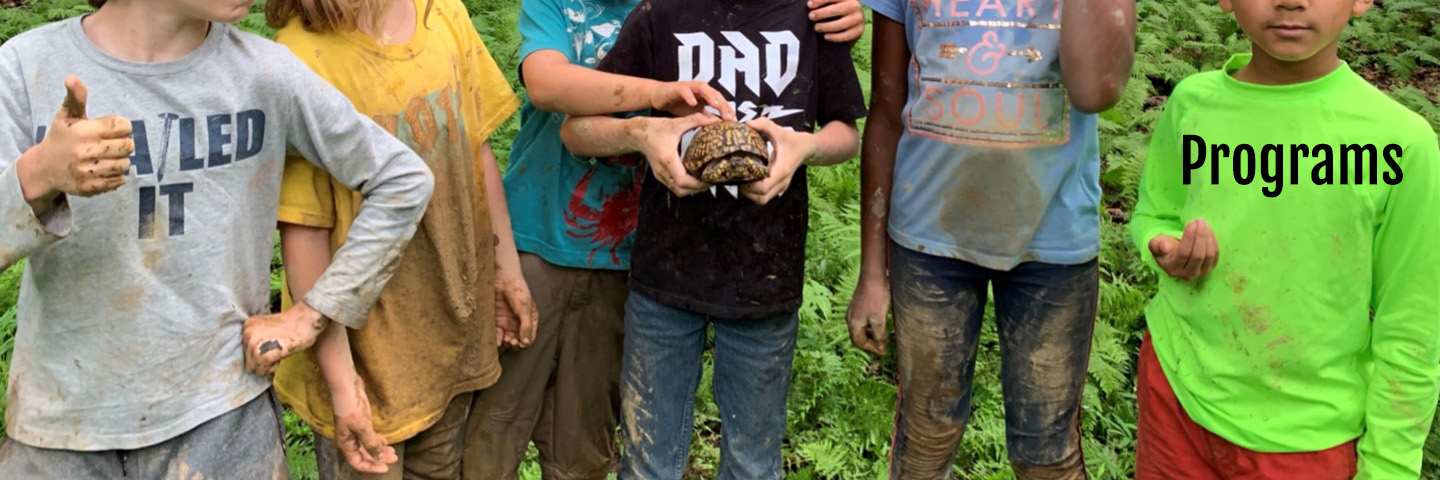Next Generation Science Standards (NGSS) Courses for School, Homeschool, Scout, and Other Groups
Content is based on research by the National Research Council, part of the National Academy of Sciences, and a collaborative state-led process to provide students an internationally benchmarked science education. We offer schools NGSS courses on the following topics:
Salt Marsh Ecology Study and Shoreline Exploration
- LS2A: Interdependent Relationships in Ecosystems
- LS2C: Ecosystem Dynamics, Functioning, and Resilience
Learn about the flora and fauna of a salt marsh and their relationships. This includes a hands-on guided tour of the intertidal shoreline, part of Long Island Sound. Students also have the option to hold small, shoreline creatures.
Nature Discovery Hike
- LS2C: Ecosystem Dynamics, Functioning and Resilience
- LS4D: Biodiversity and Humans
Habitats and Seed Dispersal
- LS2A: Interdependent Relationships in Ecosystems
- LS4B: Natural Selection LS4C: Adaptation
- LS2C: Ecosystem Dynamics, Functioning, and Resilience
- LS4D: Biodiversity and Humans
A great hands-on program that involves finding seeds and dispersing them through up to five different habitats. Students will also learn the connections between the different ecosystems through the different methods each plant uses to disperse its seeds.
Native American and Habitats
Through hands-on activities, a naturalist will guide students through, up to five different habitats, showing how Native Americans used different natural resources. This program will teach students the importance of using items found in nature for practical use.
Common Core Standard: 4.2 Native American Groups and The Environment.
Native Americans, chiefly the Haudenosaunee (Iroquois) and Algonquian-speaking groups, inhabited the region that became New York State. These people interacted with their natural environment and developed unique cultures. (Standards: 1, 3, 5; Themes: ID, MOV, GEO, GOV)
- LS2C: Ecosystem Dynamics, Functioning and Resilience
- LS4D: Biodiversity and Humans
Seining/Fish Science
- ESS2.C: The Roles of Water in Earth’s Surface Processes
- HS-ESS2-5: Earth’s Systems. A wonderful experience where students will use a 25-foot seining net to catch, touch (optional), and release sea creatures. The class focuses on fish identification and basic anatomy. Students will learn the specialized functions of each part of a fish’s anatomy and how it plays a role in the survival of a fish in a saltwater environment.
Survival Skills and Shelter Building
Students will be provided with tools and learn basic survival skills, including constructing a shelter using only materials found in the natural environment. If requested, the program will also include a fire-starting demonstration. This lesson is ideal for communication skills, team building, and problem solving.
Contact Marshlands Conservancy Nature Curator Michael Gambino: phone (914) 835-4466 or email mxg3@westchestergov.com
Programs may be combined or altered to fit any age group. Maximum group size is 30. Cost is $150 per session. Sessions may run from one to three hours. Programs must be done by 4:00 pm.

